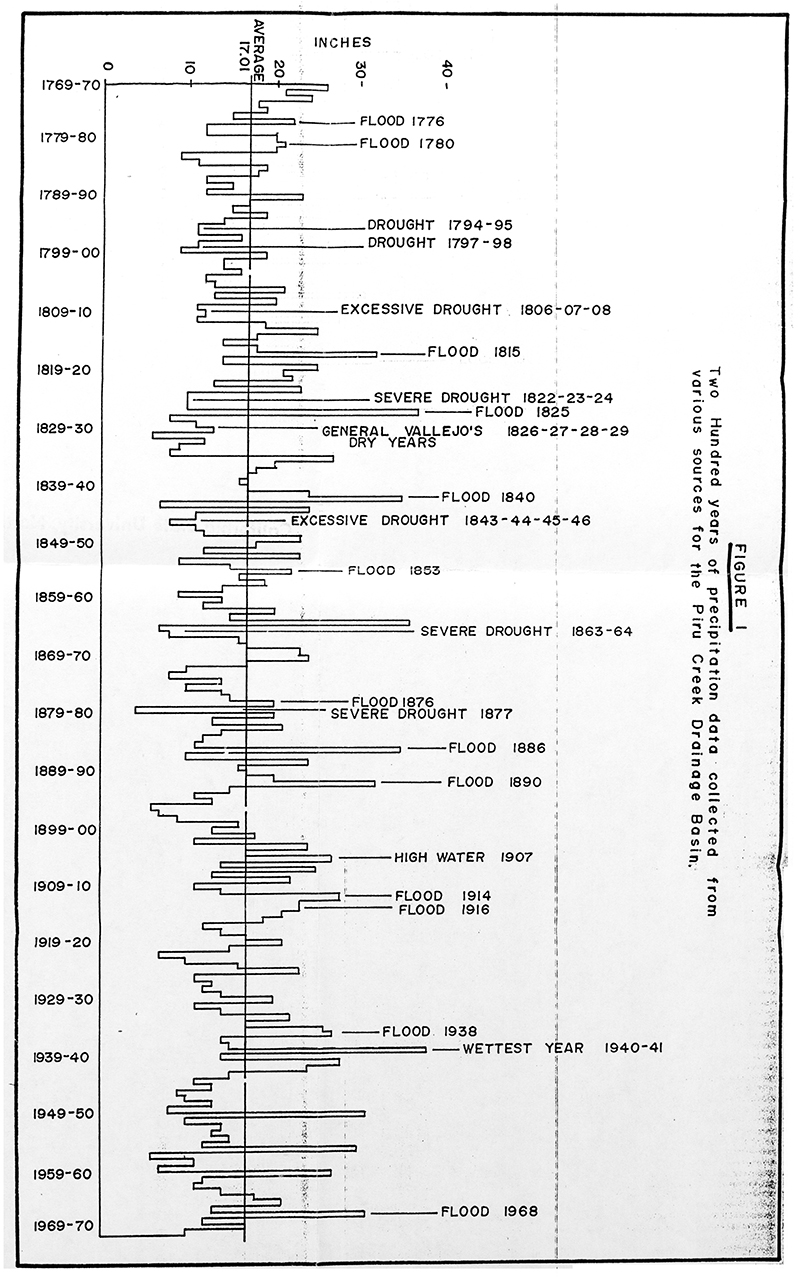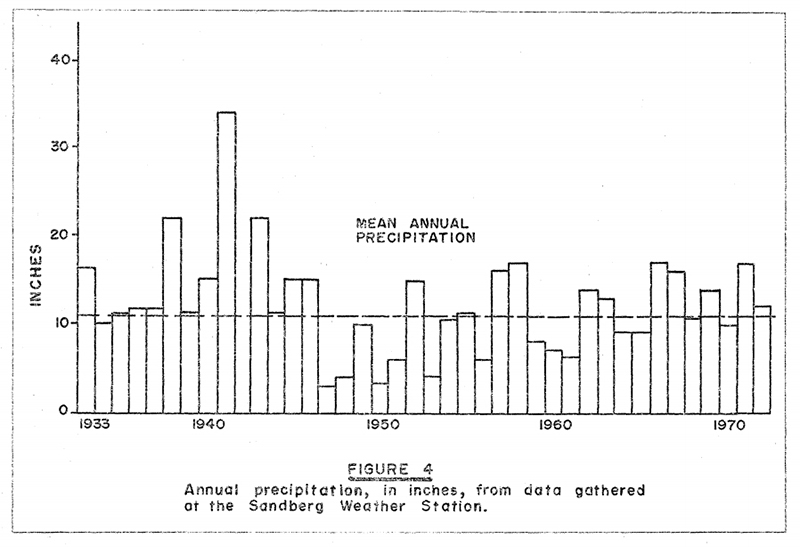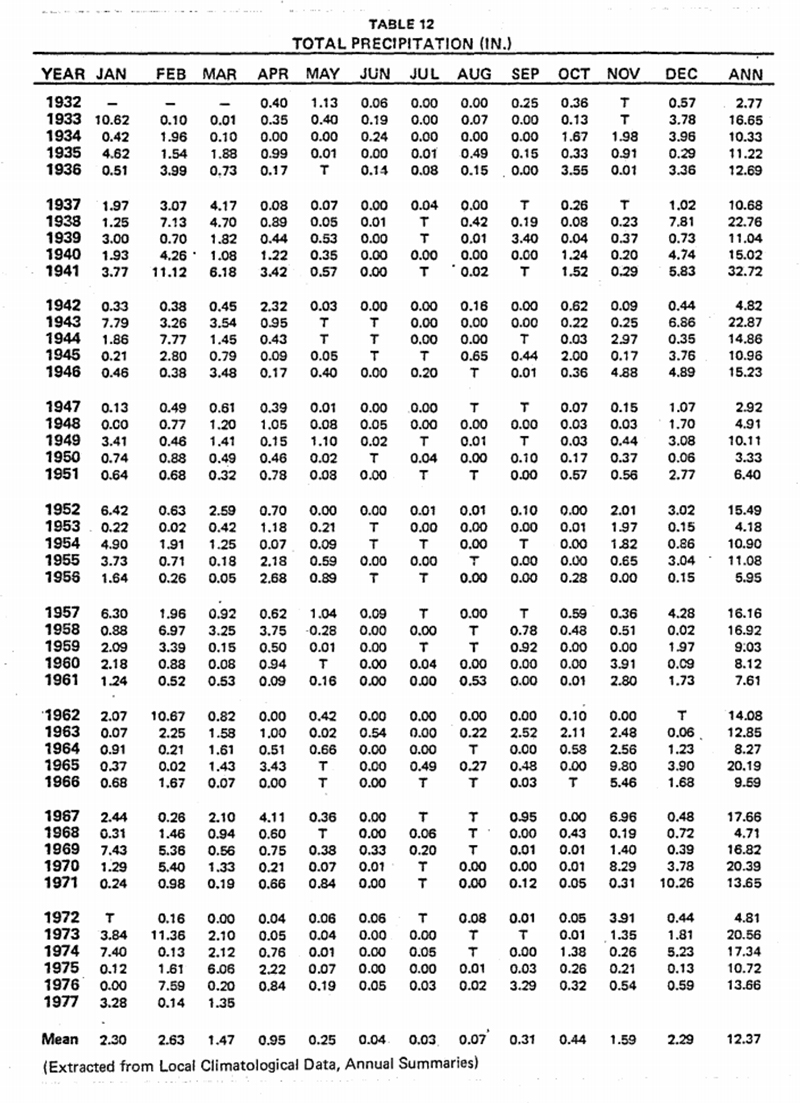Historical Rainfall in SCV, 1769-1970s.
|
Above: Precipitation data for the period 1769-1970, compiled from multiple sources by Robert Lopez for his 1974 CSUN master's thesis, "The Prehistory of the Lower Portion of the Piru Creek Drainage Basin, Ventura County, California" (Lopez 1974). Below: Precipitation data from the Sandberg Weather Station, 1932-1972, gathered by Robert Lopez (op cit.). Bottom: Monthly precipitation data, 1932-1977, source unknown. Selected Highlights: Some Effects of the Weather on SCV History. • Unusually heavy rainfall during the winter of 1862-1863 made a mess of the L.A. County road improvement project that came be known as Beale's Cut. It wasn't completed until 1865. • Severe drought followed a year later (1863-1864), killing the Del Valle family's cattle and ultimately causing them to lose the Rancho San Francisco to creditors in 1865 — i.e., the current Newhall, Valencia, Saugus, Castaic, and eastern Ventura County. • The selection of (today's) Bouquet Junction as a townsite might have kept Newhall's buildings above the 1876 floodwaters, but it was a mistake, because... • The wells ran dry during the severe drought of 1877. The townsfolk picked up sticks, train station and all, and moved them 2 miles south to the present Old Town Newhall, close to the high-water source in Railroad Canyon (Pine Street area). • 1938 wasn't freakishly wet as full years go; the trouble was, the rain came all at once in late February and early March (see bottom table), culminating in the "Great Flood of 1938" on March 2. The Santa Clara River overflowed, many (perhaps most) of the vacation cabins in the San Gabriel Mountains washed away, and 113 to 115 people died. The Great Flood compelled Congress to pass the Flood Control Act of 1941, which authorized the U.S. Army Corps of Engineers to channelize the Los Angeles River and parts of the Santa Ana. • Congress didn't act fast enough. The wettest year on record for the period was the winter of 1940-1941. It rained for months; more than 11 inches were recorded at the Sandberg Weather Station in February alone. (The typical February from 1932-1977 saw 2.63 inches at Sandberg.) The grand total for 1941 was 32.72 inches at Sandberg; the next runner-up for the period was 1943 with 22.87 inches. • Although the Sandberg totals don't necessarily reflect it, flash flooding caused the Santa Clara River to overflow in November 1967, November 1968 and especially February 1969 when 30 inches were reported in some areas and local bridges washed out.
|



